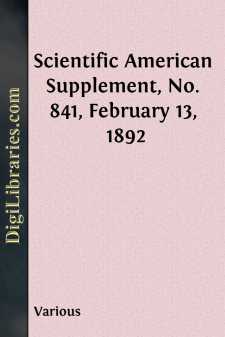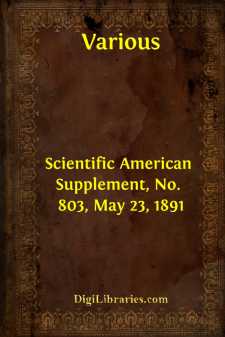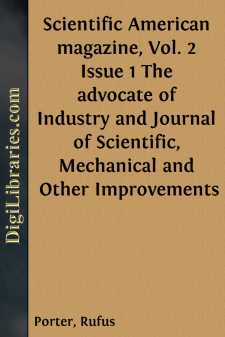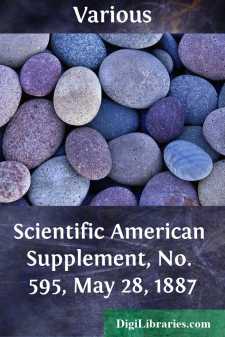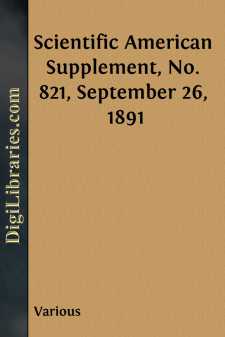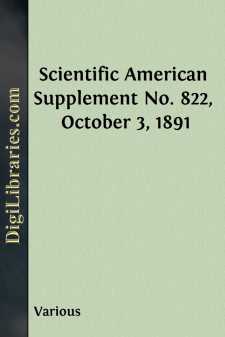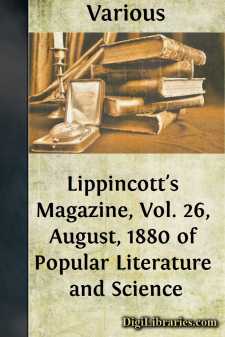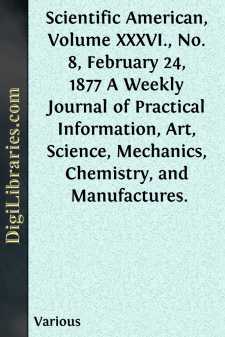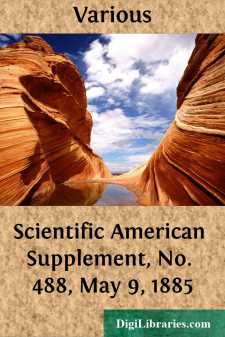Periodicals
- Art 27
- Children's periodicals 59
- Entertainment 5
- Food/Wine 2
- Games/Humor 455
- General 661
- Health 1
- History 53
- House/Home 1
- Regional 62
- Science/Nature 118
- Transportation 10
Periodicals Books
Sort by:
by:
Various
LINCOLN'S ELECTION TO THE TENTH ASSEMBLY.—ADMISSION TO THE BAR.— REMOVAL TO SPRINGFIELD. HE first twenty-six years of Abraham Lincoln's life have been traced in the preceding chapters. We have seen him struggling to escape from the lot of a common farm laborer, to which he seemed to be born; becoming a flatboatman, a grocery clerk, a store-keeper, a postmaster, and finally a surveyor. We...
more...
by:
Various
Recently, a party consisting of engineers and employes of the Missouri River Improvement Commission began an exploration of one of the mounds, a work of a prehistoric race, situated on the bluff, which overlooks the Missouri River from an elevation of one hundred and fifty feet, located about six miles below Jefferson City. This mound is one of about twenty embraced in a circle one quarter of a mile in...
more...
by:
Various
THE GREAT EQUATORIAL OF THE PARIS OBSERVATORY. The great instrument which has just completed the installation of our national observatory is constructed upon the same principle as the elbowed equatorial, 11 in. in diameter, established in 1882, according to the ingenious arrangement devised as long ago as 1872, by Mr. Loewy, assistant director of the Paris Observatory. We shall here recall the fact...
more...
by:
Rufus Porter
The Viol Seraphine. Introduction.--The clear tones of a viol or bass viol are generally admitted to be more melodious than those produced by other kinds of instruments, and many have expressed a desire to see an instrument so constructed as to be played with keys, like the organ or piano forte, and give the tones of the violin. This is the character of the instrument here introduced. It is elegant in...
more...
by:
Various
COPEMAN & PINHEY'S LIFE RAFTS. The experiments with life saving appliances which Mr. Copeman brought before the delegates of the Colonial Conference, on the 13th April, at the Westminster Aquarium, had a particular interest, due to the late and lamentable accident which befell the Newhaven-Dieppe passenger steamer Victoria. In many cases of this nature, loss of life must rather be attributed...
more...
by:
Various
THE NEW LABOR EXCHANGE, PARIS. The new Labor Exchange is soon to be inaugurated. We give herewith a view of the entrance facade of the meeting hall. The buildings, which are the work of Mr Bouvard, architect, of the city of Paris, are comprised within the block of houses whose sharp angle forms upon Place de la Republique, the intersection of Boulevard Magenta and Bondy street. One of the entrances of...
more...
by:
Various
THE STUDY OF MANKIND. Professor Max Muller, who presided over the Anthropological Section of the British Association, said that if one tried to recall what anthropology was in 1847, and then considered what it was now, its progress seemed most marvelous. These last fifty years had been an age of discovery in Africa, Central Asia, America, Polynesia, and Australia, such as could hardly be matched in any...
more...
by:
Various
AMERICAN AËRONAUTS.BALLOON ENTANGLED IN A TREE.Scattered here and there in this matter-of-fact, utilitarian age of Business one finds instances of that love of daring for its own sake, with an insatiable longing for new scenes and novel sensations, which in the days of chivalry moved the mass of men to put saddle to horse and ride off Somewhere seeking Something—just as occasional trilobites, lonely...
more...
by:
Various
DATES AND THE DATE PALM. Even those whose knowledge of the customs of the Orient extends no further than a recollection of the contents of that time-honored story book, the "Arabian Nights," are doubtless aware that, since time immemorial, the date has been the chief food staple of the desert-dwellers of the East. The "handful of dates and gourd of water" form the typical meal and daily...
more...
by:
Various
A VISIT TO THE CREUSOT WORKS. Here we are at the great forge (Fig. 1), that wonderful creation which has not its like in France, that gigantic construction which iron has wholly paid for, and which covers a space of twenty-four acres. We first remark two puddling halls, each of which contains 50 furnaces and 9 steam hammers. It is in these furnaces that the iron is puddled. The ball or bloom thus...
more...



